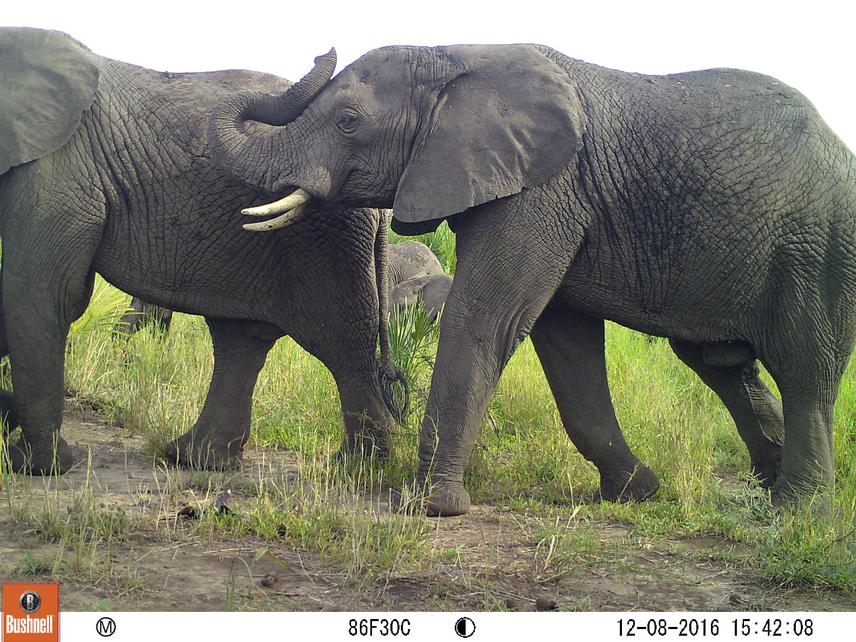Kaitlyn Gaynor
Other projects
18 Mar 2015
Wildlife Recovery amid Human Expansion in Mozambique’s Gorongosa National Park I
This study utilizes camera traps to examine the effects of human activity on wildlife distribution and ecology in a restored protected area in Mozambique.

Elephants.
After losing 90% of its large mammal populations during Mozambique’s civil war (1977-1992), Gorongosa National Park today serves as an emblem of ecological rebirth. Extensive wildlife reintroductions and renewed investment in management have changed the trajectory of this important area. However, many large mammal populations remain vulnerable, and have not yet reached pre-war levels. At this critical point in the park’s restoration, targeted research is necessary to understand the ecology, distribution, and population dynamics of its animals and the threats that they face.
The first phase of my Rufford Small Grant project focused primarily on human influences on large mammal distribution and behavior in Gorongosa. Human pressures on the system include population increases, land use changes, and the expansion of tourism. While conducting this research, it became clear that spatial and temporal heterogeneity in the environment act in concert with these anthropogenic effects in driving patterns of wildlife ecology. Large mammals are important drivers of ecosystem dynamics in African savannas, and their distribution and activity interact with habitat, fire, flooding, and other species. Understanding the ecological and human drivers of wildlife distribution and population trends over space and time is therefore critical to the effective management and conservation of this recovering ecosystem.
I am using a systematic grid of camera traps to study large mammal distribution across the landscape in Gorongosa National Park. The camera data will quantify numerical and spatial trends in wildlife populations to inform management, guiding future population augmentation and reintroduction. This project will supplement ongoing biennial aerial helicopter surveys, which currently provide the basis for assessments of population distributions and trajectories. On-the-ground camera monitoring will allow us to evaluate seasonal patterns in species distributions and gather information about the age and sex structures of populations. I will also build models to tease out the effects of the anthropogenic and ecological drivers of wildlife distribution, and identify the factors limiting species’ recovery and determining community composition. The data will also identify hotspots of wildlife and human activity and potential conflict, guiding community outreach, fencing and land zoning, anti-poaching efforts, and tourism development.